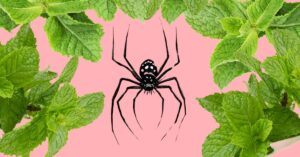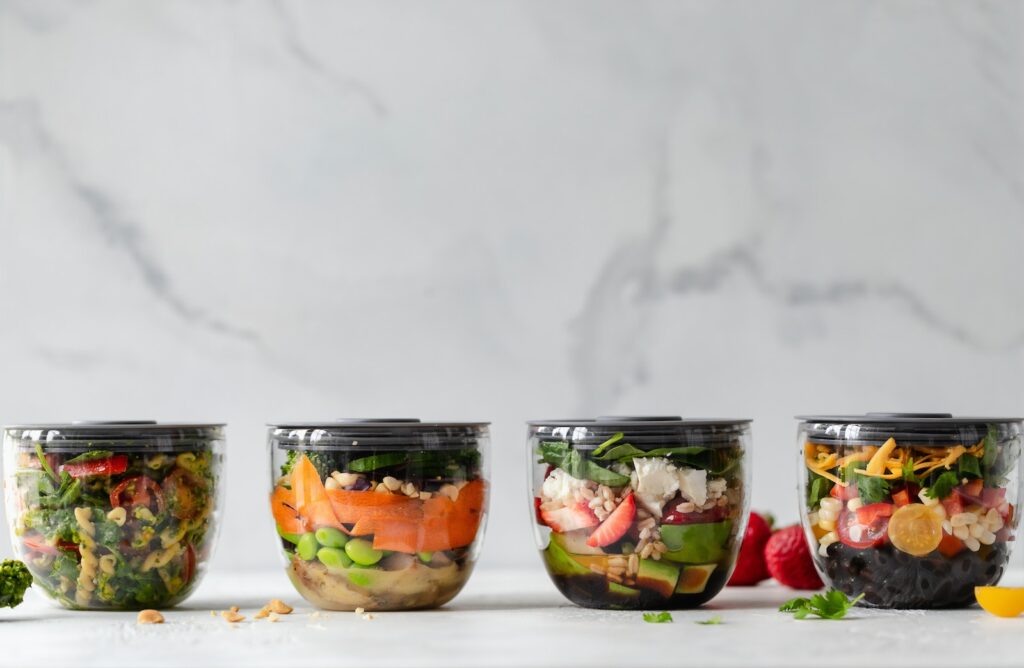Laundry day is a familiar chore for many of us, but what if we told you there’s a simple yet eco-friendly way to make it even better? Enter wool dryer balls! These unassuming little spheres are quietly revolutionizing the way we do our laundry. Today, we’ll dive deep into the world of wool dryer balls, answering the question of how many wool dryer balls per load you will need and many of your other burning questions. We will also shed light on their sustainable benefits. So, grab your laundry basket, and let’s get started!
This post may contain some affiliate links. If you happen to make a purchase through them, we might earn a small commission. Learn more about it here.
- What Does a Dryer Ball Do?
- How Much Less Energy Do They Use?
- How Do I Use Them?
- How Many Wool Dryer Balls Per Load?
- Are Wool Dryer Balls Bad for Your Dryer?
- Why Should I Choose Wool Dryer Balls Over Rubber or Plastic Dryer Balls?
- Which are the Best Wool Dryer Balls?
- What Are the Pros and Cons of Dryer Balls?
- When Should I Replace Them?
- Should I Wash Them?
- How Do I Recharge Dryer Balls?
- Can I Add a Few Drops of Essential Oil?
- Can I Use Tennis Balls Instead?
- Do Dryer Sheets Contain Toxic Chemicals?
- You Might Also Like:
What Does a Dryer Ball Do?
Wondering what a dryer ball does? Well, they’re here to save the day by softening, fluffing, and aerating your laundry. As they tumble around, they separate your clothes, allowing hot air to circulate more efficiently. This means less energy is needed, reducing your electricity bill and environmental footprint.
How Much Less Energy Do They Use?
The amount varies depending on your machine, but on average, dryer balls reduce drying time by 20% to 40%! That’s a lot of energy and money saved!
How Do I Use Them?


Using eco-friendly dryer balls is a breeze. Simply toss them into your dryer with your wet laundry and let them work their magic. No need to worry about intricate settings or additional steps – they do the job all on their own.
How Many Wool Dryer Balls Per Load?
Ah, the most asked question. How many wool dryer balls per load should you toss into your laundry? The answer is usually three to six, depending on the size of the laundry load. Larger loads require more dryer balls. They work best when they have enough space to bounce around your wet clothes, allowing air circulation that helps dry your clothes in less time and more evenly. The type of clothing in the load can also influence the number of dryer balls needed. Heavier items like jeans and towels may benefit from additional balls to ensure even drying and proper aeration.
Are Wool Dryer Balls Bad for Your Dryer?
Let’s debunk a common myth – are dryer balls bad for your dryer? No, they are not! In fact, they’re quite the opposite. These little heroes are gentle on your machine and can actually extend its lifespan by reducing drying time. Their soft nature prevents your clothes from clumping, lessening your appliance’s wear and tear.
Why Should I Choose Wool Dryer Balls Over Rubber or Plastic Dryer Balls?


When choosing between plastic, wool, or rubber dryer balls, opt for the natural alternative. Wool dryer balls are biodegradable, eco-friendly, and chemical-free. They’re a sustainable choice that’s gentle on your clothes and the environment. Wool dryer balls are also much quieter than plastic or rubber dryer balls.
Which are the Best Wool Dryer Balls?
Two outstanding choices for dryer balls are 100% New Zealand wool dryer balls like those from Friendsheep Eco Dryer Balls and Eco Roots Dryer Balls. You can also try the organic wool dryer balls from Wooly Heroes or the Smart Sheep Dryer Balls.
What Are the Pros and Cons of Dryer Balls?
Pros of Dryer Balls (Benefits of Wool Dryer Balls):
- Environmentally friendly: Reduces drying time, which reduces energy consumption. Wool dryer balls last for years instead of one wash for a dryer sheet.
- Hypoallergenic: Wool dryer balls are a great choice for individuals with sensitive skin or allergies since they don’t contain the chemicals often found in traditional dryer sheets and fabric softeners.
- Reduce Static Electricity: Dryer balls help minimize static electricity in your laundry, which can be especially beneficial during the dry winter when static cling is more common.
- Saves Money: Over time, using wool dryer balls can lead to cost savings. You won’t need to purchase fabric softeners or single-use dryer sheets; the reduced drying time can lower your energy bills.
- Easy to Store: Dryer balls are compact and easy to store when not in use. They don’t take up much space in your laundry room or linen closet.
Cons of Dryer Balls:
- Initial Cost: While wool balls can save money in the long run, the upfront cost of purchasing a set can be higher than a box of dryer sheets or fabric softener. Over time, dryer balls are the very clear winner in cost.
- Maintenance: Although minimal, wool dryer balls may require occasional maintenance, such as washing and recharging. However, this effort is relatively small compared to the benefits they offer.
- Replacement Needed: Eventually, all dryer balls will wear out and need to be replaced.
- Not Ideal for Delicates: While dryer balls work well for most laundry, they may not be the best choice for delicate fabrics like silk or lace, which require gentle handling.
When Should I Replace Them?
The lifespan of your wool dryer balls can vary depending on factors like usage frequency and quality. On average, a set of good-quality wool dryer balls can last for around 2 to 5 years. Over time, your wool dryer balls may show signs of wear, such as pilling or losing their shape. When this happens, it’s time to consider replacing them. But don’t fret – their eco-friendly nature means they’re easy to recycle or compost.


Help me get started!
Do you want to live a less-toxic, more eco-friendly lifestyle but have no idea where to begin? Here’s our “Non-Toxic 101” guide to get you started today!


Should I Wash Them?
Your eco-friendly dryer balls don’t require frequent washing. However, if you choose to wash them, you can give them a quick hand wash with mild soap and toss them in the dryer.
How Do I Recharge Dryer Balls?
If your wool dryer balls seem less effective or harden after some time, you can “recharge” them by washing them in your machine in hot water on a gentle cycle and drying them in your dryer or air dry.
Can I Add a Few Drops of Essential Oil?
Absolutely, you can add a few drops of essential oil to your wool dryer balls! This is a wonderful way to naturally scent your laundry without the need for synthetic fragrances found in conventional dryer sheets. Here’s how you can do it:
- Choosing Your Essential Oil: Start by selecting an essential oil. Lavender, lemon, and eucalyptus are popular for their pleasant scents and potential aromatherapy benefits. Make sure to use pure, high-quality essential oils for the best results.
- Applying the Oil: Simply add a few drops (around 3-5 should suffice) of your favorite essential oil directly onto each wool dryer ball. Be careful not to overdo it – a little goes a long way!
- Letting the Oil Absorb: After applying the oil, give the dryer balls some time to absorb it before using it. This can be anywhere from a few minutes to an hour. This step ensures that the oil doesn’t transfer directly to your clothes.
- Drying Your Laundry: Toss the scented dryer balls in with your wet laundry and start the dryer. As the balls tumble around, they’ll gently infuse your clothes with the aroma of the essential oil.
- Refresh as Needed: The scent from the essential oils will gradually fade over several loads of laundry. When you notice the scent diminishing, simply add a few more drops of oil to the dryer balls.
Adding essential oils to your wool dryer balls is not only a simple and effective way to add a fresh, clean scent to your laundry, but it also allows you to customize the fragrance according to your preferences. Plus, it’s a great way to reap the benefits of aromatherapy while doing your laundry. If you love a fresh smelling home, check out our easy primer on making your own non toxic room spray with essential oils, and our article on the best non toxic wall plug-ins.
Can I Use Tennis Balls Instead?
Using tennis balls in your dryer is an option, but there are differences to consider compared to wool dryer balls:
- Material and Noise: Tennis balls are rubber and can be much noisier than natural wool dryer balls.
- Chemicals and Dyes: Some tennis balls may contain harmful chemicals or dyes that could transfer to clothes at high heat.
- Static Reduction: Wool dryer balls are more effective at reducing static cling.
- Durability and Eco-Friendliness: Wool dryer balls last longer and are more eco-friendly, being biodegradable and made from natural wool.
- Gentleness on Clothes: Wool dryer balls are softer and gentler, especially on delicate fabrics.
While tennis balls can fluff your laundry, wool dryer balls are better for static reduction eco-friendliness and are gentler on clothes. However, tennis balls can be a temporary solution if needed.
Do Dryer Sheets Contain Toxic Chemicals?
Whether dryer sheets are toxic is a subject of debate and depends mainly on their ingredients. Dryer sheets contain various synthetic materials, chemicals, and fragrances, some of which may cause concern. Here are a few key points to consider:
- Chemicals and Fragrances: Many dryer sheets contain artificial fragrances and chemicals to make clothes feel softer and smell better. However, some of these chemicals can irritate sensitive skin and cause allergic reactions in some individuals.
- Volatile Organic Compounds (VOCs): Some dryer sheets release volatile organic compounds, which can be harmful when inhaled and may contribute to indoor air pollution. (Source: Healthline)
- Effects on Sensitive Individuals: People with asthma, allergies, or sensitive skin may be more affected by the chemicals in dryer sheets. The fragrances and fabric softeners used can potentially exacerbate respiratory and skin conditions. (Source: Healthline)
- Environmental Concerns: Apart from potential health effects, the environmental impact of dryer sheets is also a concern. They are typically single-use and not biodegradable, contributing to waste.
- Lack of Full Disclosure: Many brands do not fully disclose the ingredients used in their dryer sheets, making it difficult to assess their safety comprehensively.
So, while not all dryer sheets are toxic, they do contain chemicals that can be problematic for some individuals and the environment. Those with health concerns, particularly sensitivities or allergies, should opt for hypoallergenic or eco-friendly alternatives, such as wool dryer balls.
In the world of sustainability, small changes can make a big difference, and wool dryer balls are a prime example. Incorporating these eco-friendly dryer balls into your laundry routine will save you time and money and reduce your environmental impact. So, go ahead and embrace the woolly revolution – your laundry and the planet will thank you!
We have answered the most FAQ from how many wool dryer balls per load you need to which are the best wool dryer balls. If we missed anything, let us know in the comments!
You Might Also Like:
Are Tree-Free Bamboo Paper Towels Eco-Friendly & Panda-Safe?
Nothing beats the convenience of kitchen paper towels. They are a non-sustainable consumer good that…







